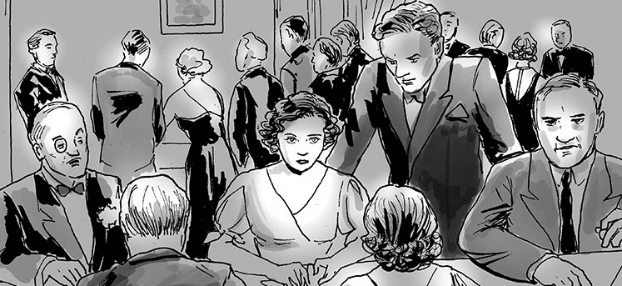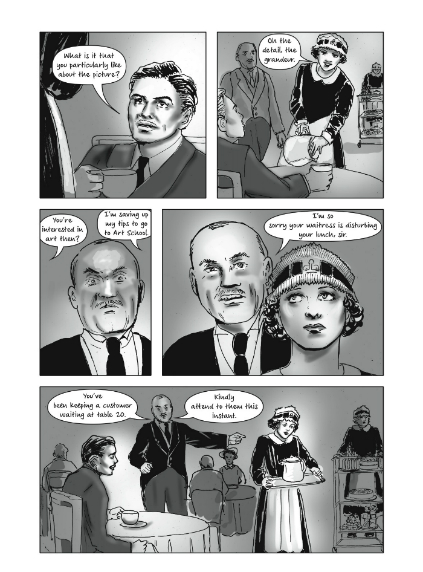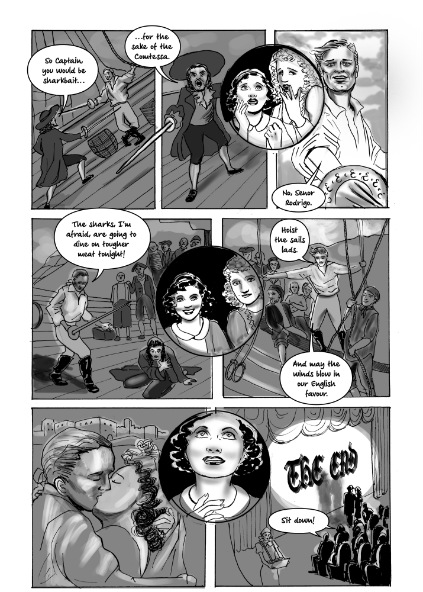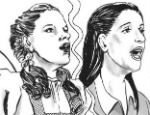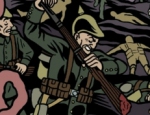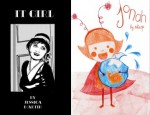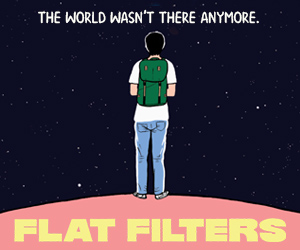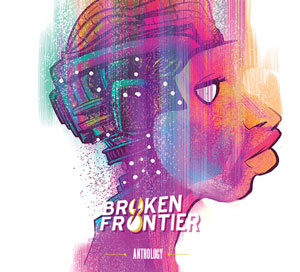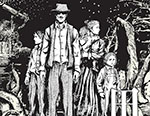From tentative first-time small presser to published graphic novelist, it’s been a remarkable couple of years for Jessica Martin.
In 2014 Martin was a finalist in the Myriad First Graphic Novel Competition for her debut graphic novel Elsie Harris Picture Palace which was eventually released by MIWK Publishing at the end of last year. In the intervening period of time she self-published two critically acclaimed comics – It Girl, the story of silent film star Clara Bow, and Vivacity, a biocomic on celebrated actress Vivien Leigh – contributed to a number of well-received anthologies, worked with Mark Buckingham on the DC/Vertigo quarterly SFX, and was also nominated by the BF staff in the Emerging Talent category in last year’s Broken Frontier Awards.
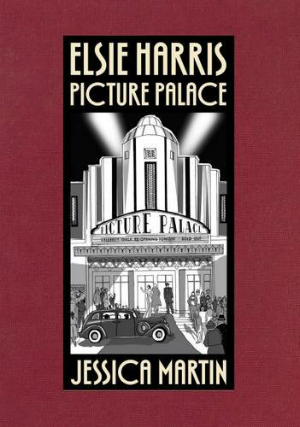 That’s an impressive upwards trajectory by anyone’s standards.
That’s an impressive upwards trajectory by anyone’s standards.
Martin’s rapid rise on the UK indie comics scene has been one that has been covered in great depth here at BF. I was lucky enough to be one of those judges on the Myriad competition who saw her potential from the very beginning, and we were the first site to review her work in my ‘Small Pressganged’ column. With an obvious love for a golden age of cinema, her retro-conscious style hearkens back to a traditional school of comics storytelling that has been absent for so long that it feels simultaneously also strangely innovative.
Elsie Harris Picture Palace follows the story of its titular heroine from the mid to late 1930s as she embarks on an adventure that takes her from teenage Lyons Corner House “Nippy” to success in the Hollywood film industry. A chance encounter while waitressing in that tea house at the story’s beginning sets a chain of events in motion that will see Elsie move briefly into the world of fashion before she finds herself employed by the Hesketh Dalton film company.
As time passes, Elsie’s position evolves from gofer to an integral part of the production side. She displays a natural aptitude for storyboarding and scripting that elevates her amongst their ranks despite having to contend with the casual sexism of the era. When the team are given the opportunity to work on Greensleeves – a historical blockbuster based on the lives of Henry VIII and Anne Boleyn – Hollywood intrigue, love, betrayal and unlikely drama beckon. And Elsie Harris’s life will never be quite the same again…
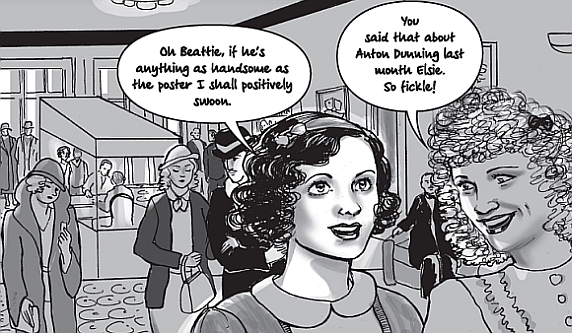
Perhaps the easiest soundbite to throw at Jessica Martin’s debut long-form work would be to describe it as a more adult form of a Girl’s Own story. It’s impossible for the readers not to take Elsie to their hearts from those first early pages of her clumsy disasters at the Lyons Corner House through to her perspicacity in the face of adversity at Hesketh Dalton. Martin’s narrative has more than a hint of the comfort read to it; cheats and bullies are triumphed over and hard work and diligence are rewarded. And yet it stays just that right side of over-sentimentality, avoiding cloying mawkishness by never forgetting the harsh realities and social injustices of the time.
But this book isn’t just Elsie’s tale. It’s the story too of an earlier age of cinema as the magic behind its secrets is revealed and elaborated on. In this regard Elsie Harris Picture Palace is obviously a meticulously researched piece, expounding the behind-the-scenes sorcery and the technical wizardry of the day. It’s also an evocation of point in time when the world was a much larger place with far more pronounced borders; when a transatlantic sojourn was a major culture shock in and of itself.
Full of delicious, melodramatic twists, and with a sprawling cast of characters, Elsie has more than a whiff of the period soap opera to its near 150 pages. But it’s Martin’s impressive understanding of how the language of comics works that will prove unforgettable to the reader. Her sense of panel-to-panel pacing for example is acute, particularly her understanding of when to move to a full-page shot for dramatic emphasis or to shift perspective by zooming out to build a sense of atmosphere.
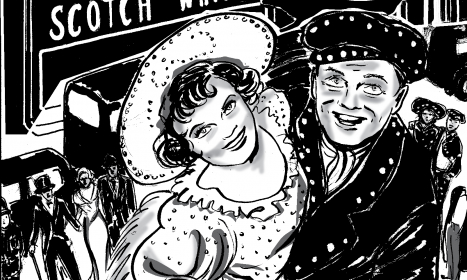 The book is also punctuated by supplementary one-page interludes that bolster a sense of period authenticity: a guide to the attire of a Nippy, newspaper articles, movie magazine pages, advertisements and the like. Apparent ephemera which nevertheless provide a feeling of world-building, of characters existing in a fully realised fictional locale.
The book is also punctuated by supplementary one-page interludes that bolster a sense of period authenticity: a guide to the attire of a Nippy, newspaper articles, movie magazine pages, advertisements and the like. Apparent ephemera which nevertheless provide a feeling of world-building, of characters existing in a fully realised fictional locale.
Martin’s perceptive grasp of how to build mood or tension by manipulating comics’ unique structural relationship with the passage of time is exemplary. An early segment where Elsie and friend’s ongoing reactions are juxtaposed with the exploits of their heroes on the big screen, for example, or the placement of individual panels over an expansive double-page spread to exude the hustle and bustle of Hollywood revelry. It’s technique that is confident and assured in delivery and displays the most perceptive awareness of the distinctive compositional possibilities of the medium.
Elsie is perhaps not just retro in terms of the oddly dreamlike realism of Martin’s gorgeous grey-toned visuals but also in her storytelling approach. The first-person narration builds up a sense of intimacy but there’s a level of exposition that is uncommon in comics today. It’s one that serves to form a greater bond between audience and on-page cast, fostering a closer connection between both sides of the page.
By the time the reader gets to that final page there’s a thematic sensation that Elsie’s journey has mirrored her creator’s and that, similarly, this handsomely presented hardcover is simply chapter one of an ongoing saga for them both. A gorgeously rendered evocation of a bygone era of the silver screen brought unforgettably to life on the comics page. Elsie Harris Picture Palace is a triumphant testament to Jessica Martin’s keen understanding of the dynamics of sequential art.
Jessica Martin (W/A) • Miwk Publishing, £17.99
You can order the book online here.
Jessica Martin is also a contributor to the Broken Frontier Small Press Yearbook available here priced £6.00.





